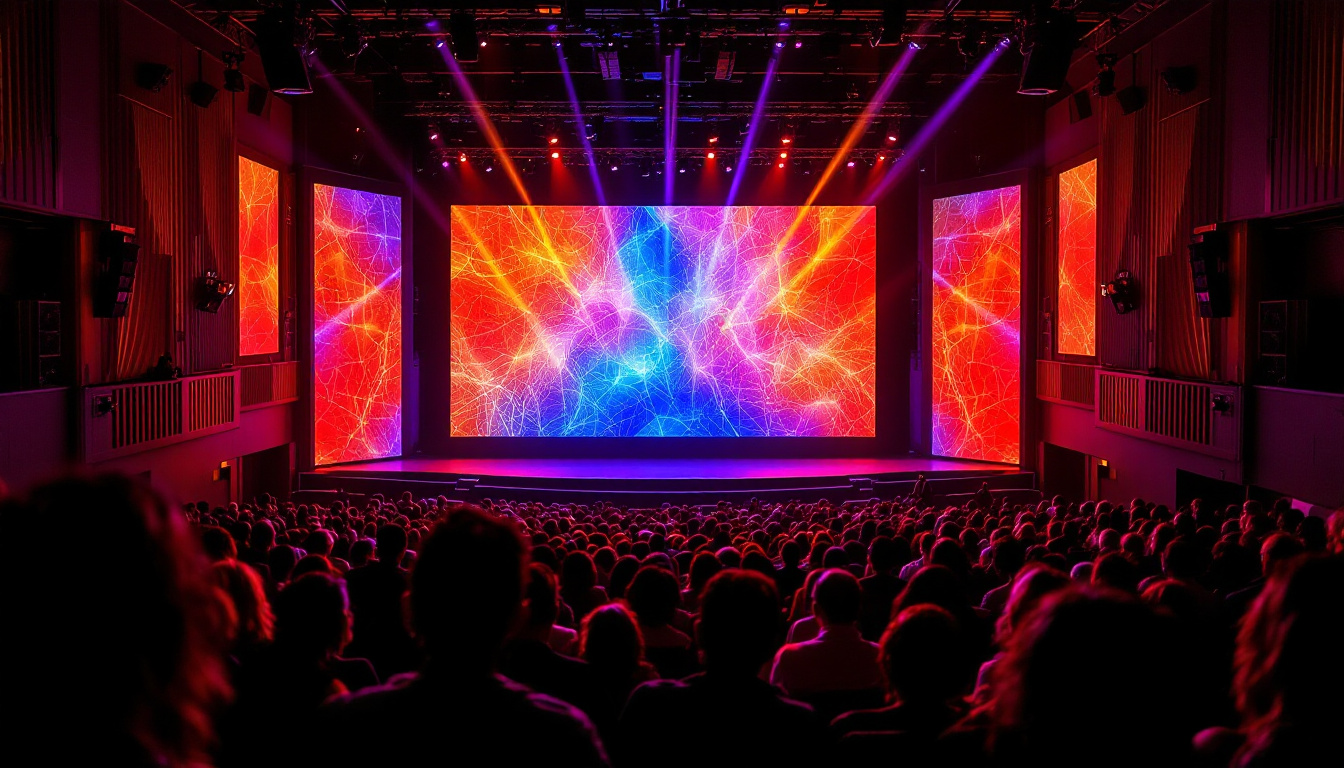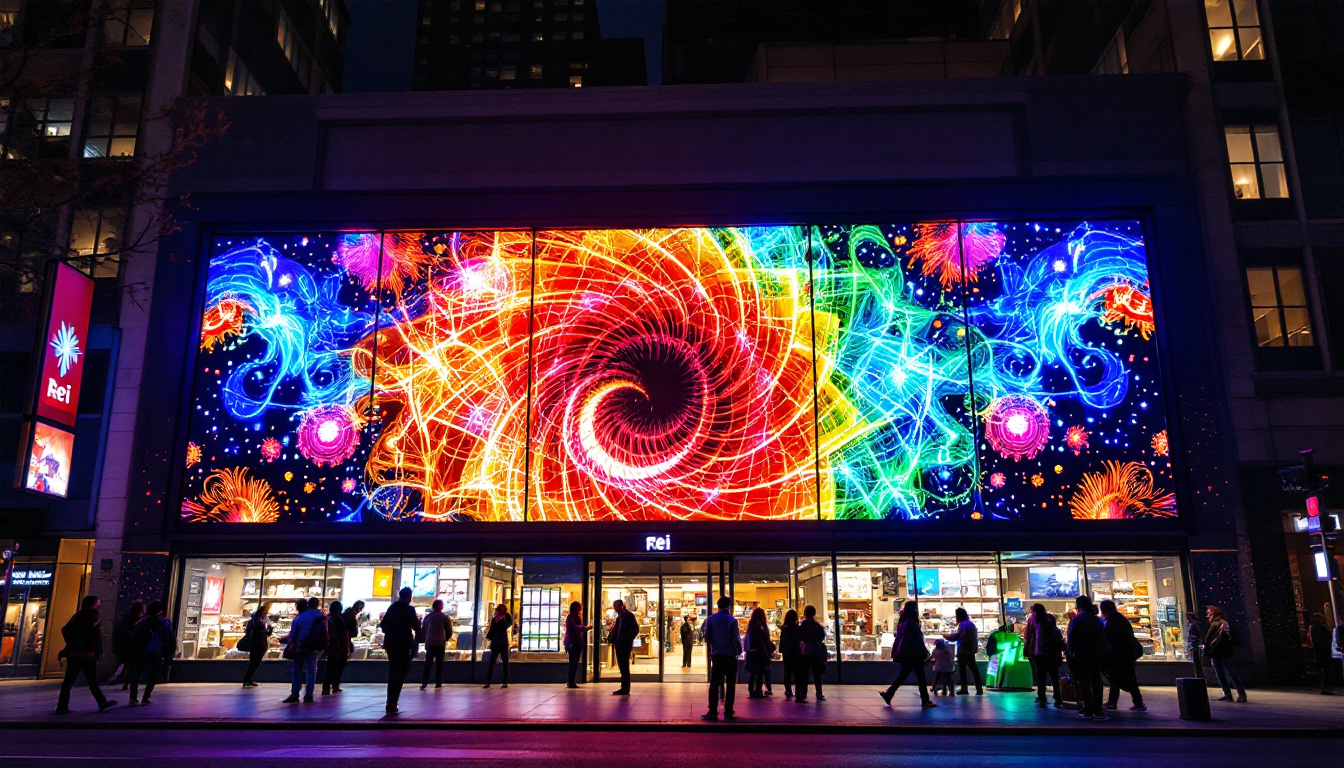In the world of modern display technology, the terms LCD and LED are often used interchangeably, leading to confusion among consumers and professionals alike. Understanding the differences and similarities between these technologies is crucial for making informed decisions when purchasing displays for various applications, be it for televisions, computer monitors, or smartphones. This article delves into the intricacies of LCD and LED displays, exploring their functions, advantages, and applications.
Understanding LCD Technology
Liquid Crystal Display (LCD) technology has been a staple in the display industry for decades. It utilizes liquid crystals sandwiched between two layers of glass or plastic to create images. When an electric current passes through the liquid crystals, they align in such a way that they either block or allow light to pass through, thus forming images.
The Components of LCD Displays
At the core of LCD technology are several key components:
- Liquid Crystals: These are the primary elements that manipulate light to create images. They do not emit light themselves but rather modulate the light that passes through them.
- Backlight: Since LCDs do not produce their own light, they require a backlight, typically made of fluorescent tubes or LEDs, to illuminate the display.
- Polarizers: These layers are essential for controlling the light that enters and exits the liquid crystal layer, ensuring that the display produces clear and vibrant images.
How LCD Displays Work
The operation of an LCD display can be broken down into a few simple steps. First, the backlight emits light, which passes through the polarizing filters. Next, the liquid crystals adjust their alignment based on the electrical signals they receive. This alignment determines how much light can pass through to the front polarizer, ultimately creating the desired colors and images on the screen.
LCD displays are known for their excellent color reproduction and sharpness, making them ideal for a wide range of applications, from televisions to smartphones. However, they do have limitations, particularly in contrast ratios and viewing angles compared to newer technologies.
One of the most significant advancements in LCD technology is the introduction of In-Plane Switching (IPS) panels. Unlike traditional twisted nematic (TN) panels, IPS technology allows for wider viewing angles and better color accuracy. This is particularly beneficial in professional settings where color fidelity is crucial, such as graphic design and photography. Additionally, IPS panels have improved response times, making them more suitable for fast-paced video content and gaming.
Moreover, the evolution of LCD technology has led to innovations such as LED-backlit LCDs, which enhance energy efficiency and brightness. These displays use light-emitting diodes (LEDs) instead of traditional fluorescent tubes for backlighting, resulting in thinner screens and improved contrast ratios. As manufacturers continue to refine LCD technology, we can expect to see even more enhancements that push the boundaries of display quality and user experience.
Exploring LED Technology
Light Emitting Diode (LED) technology represents a significant advancement in display technology. While LED displays are often considered a subset of LCD technology, they use different methods to produce images and offer several advantages over traditional LCDs.
Types of LED Displays
There are primarily two types of LED displays:
- Edge-Lit LED: In this configuration, LEDs are placed along the edges of the screen, and light is distributed across the display using a light guide panel. This design allows for thinner displays but can lead to uneven lighting.
- Full-Array LED: This type features a grid of LEDs behind the entire screen, providing more uniform lighting and better control over brightness and contrast. Full-array LED displays often include local dimming technology, which enhances contrast by dimming specific areas of the screen.
How LED Displays Work
LED displays function by using an array of tiny light-emitting diodes to produce images. Each pixel in an LED display consists of multiple diodes that emit red, green, and blue light. By adjusting the intensity of these colors, the display can create a wide spectrum of colors and achieve high brightness levels.
One of the standout features of LED technology is its energy efficiency. LED displays consume significantly less power than traditional LCDs, making them a more environmentally friendly option. Additionally, they offer superior contrast ratios and faster response times, which are particularly beneficial for gaming and high-definition video content.
Moreover, the longevity of LED displays is another compelling aspect. With a lifespan that can exceed 50,000 hours, LED screens can outlast many other display technologies, reducing the need for frequent replacements. This durability not only contributes to lower long-term costs but also minimizes electronic waste, aligning with sustainable practices. Furthermore, advancements in LED technology, such as MicroLED and MiniLED, are pushing the boundaries even further, offering enhanced color accuracy and deeper blacks, which are essential for immersive viewing experiences.
In addition to their impressive technical specifications, LED displays have found applications in a variety of fields beyond traditional television and computer monitors. From digital billboards that captivate audiences in urban landscapes to high-performance screens used in professional gaming setups, the versatility of LED technology is remarkable. Industries such as healthcare and automotive are also leveraging LED displays for critical applications, where clarity and precision are paramount. As the technology continues to evolve, we can expect even more innovative uses that will redefine how we interact with visual media.
Comparing LCD and LED Displays
While both LCD and LED displays serve the same fundamental purpose of displaying images, there are notable differences between the two technologies. Understanding these differences can help consumers make better choices based on their specific needs.
Image Quality
When it comes to image quality, LED displays generally outperform traditional LCDs. The ability to achieve higher contrast ratios and deeper blacks is a significant advantage of LED technology. Full-array LED displays, in particular, excel in this regard, as they can dim specific zones of the screen to enhance the overall picture quality.
Moreover, LED displays often provide better color accuracy and brightness, making them more suitable for environments with varying lighting conditions. This is especially important for professional applications such as graphic design and video editing, where color fidelity is paramount.
Energy Efficiency
Energy efficiency is another critical factor to consider. LED displays consume less power than traditional LCDs, which can lead to significant savings on electricity bills over time. This efficiency is particularly beneficial for large installations, such as digital signage or video walls, where multiple displays are used simultaneously.
Furthermore, the lower power consumption of LED displays contributes to a reduced environmental impact, making them a more sustainable choice for consumers and businesses alike.
Cost Considerations
Cost is often a deciding factor when choosing between LCD and LED displays. While LED technology offers superior performance and efficiency, it typically comes at a higher price point. Traditional LCDs may be more budget-friendly, making them an attractive option for consumers who prioritize cost over advanced features.
However, as LED technology continues to evolve and become more widespread, the price gap between LCD and LED displays is gradually narrowing. Consumers may find that investing in an LED display is worthwhile in the long run due to its enhanced performance and energy savings.
Applications of LCD and LED Displays
Both LCD and LED displays have found their place in a variety of applications, each excelling in different areas. Understanding these applications can help users select the right technology for their needs.
LCD Applications
LCD technology is widely used in various devices, including:
- Televisions: Many budget-friendly TVs still utilize LCD technology, providing decent performance for casual viewing.
- Computer Monitors: LCD monitors are prevalent in office environments, offering good color reproduction and clarity for tasks such as word processing and web browsing.
- Smartphones: Many smartphones use LCD screens, particularly in mid-range models, due to their cost-effectiveness.
LED Applications
LED displays have become increasingly popular in various sectors, including:
- High-End Televisions: Premium TVs often feature LED technology, providing stunning visuals and an immersive viewing experience.
- Digital Signage: LED displays are commonly used for advertising and information dissemination in public spaces, thanks to their brightness and visibility.
- Gaming Monitors: Gamers frequently prefer LED displays for their fast response times and vibrant colors, enhancing the overall gaming experience.
The Future of Display Technology
As technology continues to advance, the future of display technology looks promising. Innovations in both LCD and LED technologies are paving the way for even better performance and new applications.
Emerging Trends
Several trends are shaping the future of display technology:
- MicroLED: This emerging technology combines the best aspects of LCD and LED, offering self-emissive pixels for superior contrast and color accuracy without the need for a backlight.
- OLED Displays: Organic Light Emitting Diode (OLED) technology is gaining traction for its ability to produce deep blacks and vibrant colors, making it a strong competitor to traditional LED displays.
- Flexible Displays: The development of flexible display technology is opening up new possibilities for applications in wearables, smartphones, and even large-scale installations.
Conclusion
In summary, understanding the differences between LCD and LED displays is essential for making informed choices in today’s technology-driven world. While LCD technology remains a reliable option for many applications, LED displays offer significant advantages in terms of image quality, energy efficiency, and versatility. As display technology continues to evolve, consumers can expect even more innovative solutions that enhance their viewing experiences.
Whether one opts for an LCD or an LED display, the key is to consider individual needs and preferences. With the right information, finding the perfect display technology becomes a more manageable and rewarding endeavor.
Discover LumenMatrix’s Advanced LED Display Solutions
Ready to elevate your visual experience with the latest in LED display technology? Look no further than LumenMatrix, a pioneer in crafting LED display modules that transform how brands engage and captivate their audience. From dynamic Indoor and Outdoor LED Wall Displays to innovative solutions like Vehicle LED Displays, LED Posters, and even Custom LED Displays, LumenMatrix offers a comprehensive range of products designed to make a lasting impression. Embrace the future of visual communication and check out LumenMatrix LED Display Solutions today to see how you can share your message with unparalleled impact and clarity.






























